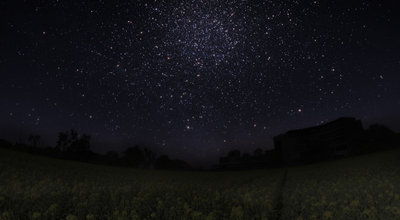Page 2 of 2
Re: APOD: M13: A Great Globular Cluster of Stars (2016 Jul 27)
Posted: Wed Jul 27, 2016 9:04 pm
by Chris Peterson
heehaw wrote:Someone please explain to me why globular clusters don't have dark matter concentrations. Everything else does. And there's "galaxies" with few stars but LOTS of dark matter. I don't think this is understood at all!
There is a lot that remains uncertain about the formation of both galaxies and globular clusters, as well as the relationship between the two.
That said, there do appear to be lots of
globular clusters that are dominated by dark matter. Which just complicates the question so far.
Re: APOD: M13: A Great Globular Cluster of Stars (2016 Jul 27)
Posted: Wed Jul 27, 2016 9:42 pm
by ShaileshS
geckzilla wrote:JimWWhite@aol.com wrote:I can only imagine what the night time sky would be like on a world somewhere in M13. Does anyone know of a simulation of what it might look like? I'd also imagine it would be a fairly hostile environment with all the radiation sources in relatively close proximity. Amazing!
Many artists have attempted to depict such worlds. I did so myself, once, using Stellarium and some Hubble data. It's not M13, though.

Geck, your picture seems to be of a night sky from a place *near* glob cluster and so they'd be able to see the rising and setting of cluster. The original question was how would the scene be in the sky from a place within the glob cluster (say near center of it). And as Zoomer points out, maybe there may not be a night time at such place, it'll have some shine/brightness from light rays of some star or the other all the time .. ? Thanks.
Re: APOD: M13: A Great Globular Cluster of Stars (2016 Jul 27)
Posted: Wed Jul 27, 2016 11:01 pm
by geckzilla
ShaileshS wrote:Geck, your picture seems to be of a night sky from a place *near* glob cluster and so they'd be able to see the rising and setting of cluster. The original question was how would the scene be in the sky from a place within the glob cluster (say near center of it). And as Zoomer points out, maybe there may not be a night time at such place, it'll have some shine/brightness from light rays of some star or the other all the time .. ? Thanks.
It's been said that it is very difficult for planets to form within a glob, hence my illustration of a planet on the outer fringes of the glob. Most stars would still be about the brightness of Venus and Jupiter in the sky. A few closer ones may rival the moon in brightness. I think it would be very difficult to have a planet that truly has no night. Even a planet in a star system containing two stars would still have long periods of "normal" day/night cycles. One of the brightest "nights" in our own solar system may be at Saturn where ringshine lights up the dark side of the planet during the season in which its rings angle toward the Sun.